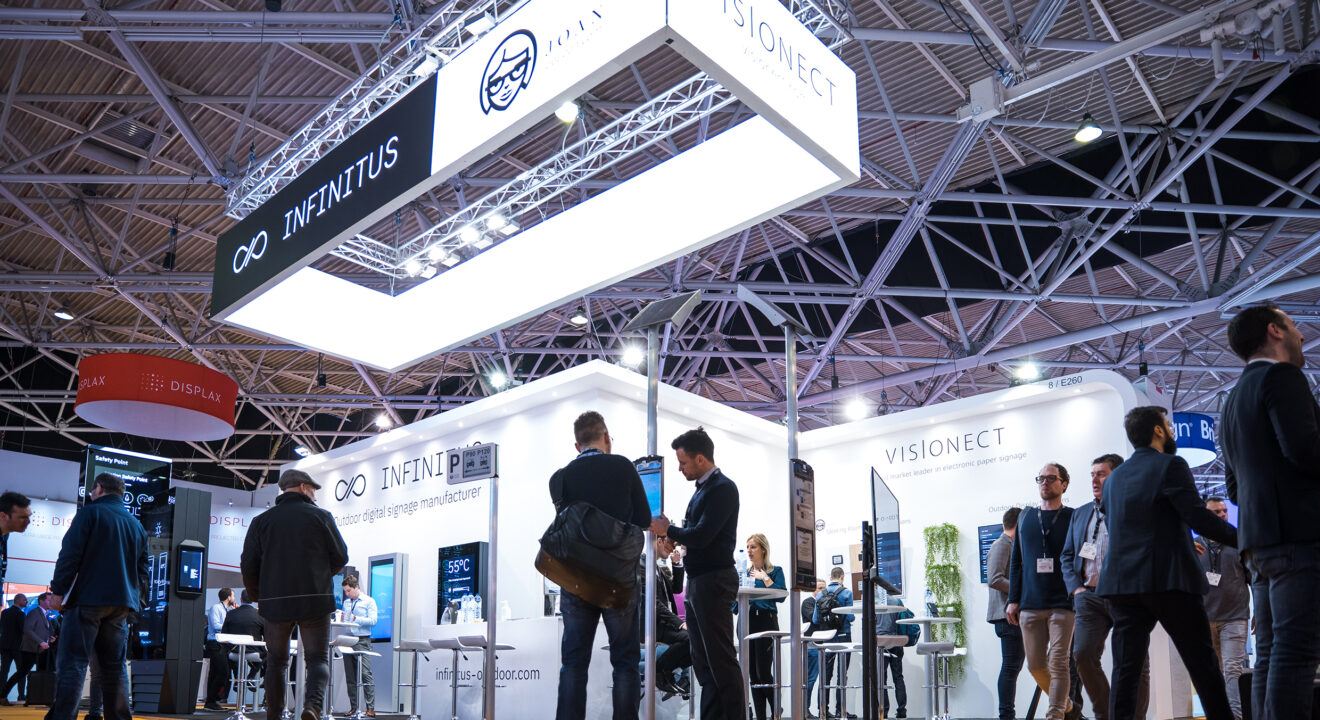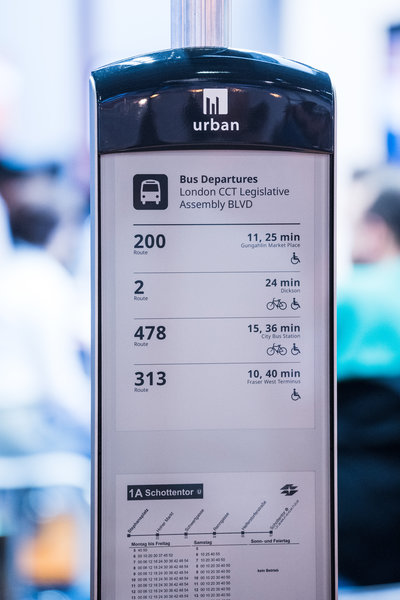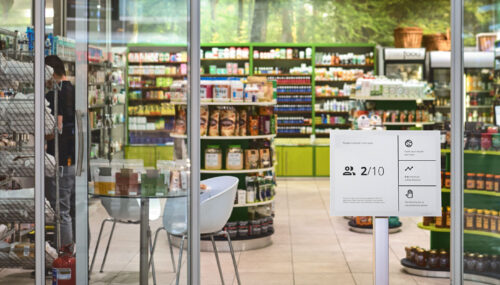

Visionect e-paper at ISE and IT-TRANS: “Nothing is more powerful than an idea whose time has come”
Visionect, 25 Feb 2020
Cities are expanding rapidly. Around 2.5 billion more people will be living in urban areas by 2050, projects a UN report, bringing massive strain on public infrastructure, an issue that needs to be, more than ever, effectively and promptly addressed.
Of these city infrastructures, public transport is among the most crucial. It is to play a hugely important role when it comes to relieving the population flow and the influx of traffic, be it in cities or the surrounding rural areas; adding to the importance of public transport is its role in reducing the carbon footprint of the world’s population.
All very good reasons for the best possible quality of public transportation services to be of great importance to every single one of us.
Commented John Zib, External Expert on Citizen Engagement and Digital Place at European Commission, while visiting our booth at this year’s Integrated Systems Europe: “Most technology companies push the development of their products capacity. Making something more usable and useful is another story.”
Public transport digitization: step one
In public transportation, one of the more important aspects of rider satisfaction is quality information placed at points of interest—the public transportation (bus, tram, metro) stop itself. In the era of information technology, public transport users are right to expect information at these points in real time, using the data displayed to effectively commute from A to B without disruptions such as roadblocks, delays or detours.
In this smart city digitization, the first step towards evolving the public transport service seemed to be LED and TFT technology. It, however, came with a challenge in terms of scalability. While in recent years this technology has reached a level of price optimization, its complex installation and lifetime energy use nevertheless still represent a significant overhead, one that prevents rolling out the real-time tech across all relevant points of interest.
Adding to the issue is the fact that rapid digitization across urban areas has brought an onslaught of flashy, bright messages at every turn, polluting our environment with light and underlining the importance of the old adage: less is more. Digital communication, it seems, should sometimes take a step back, discretely and non-intrusively delivering information to its target audience. One such use case is most definitely public transport, be it real-time traffic information influencing ridership or other relevant local information provided at the bus or metro stop.
And electronic paper is just the medium to bring it to life.

Urban dual 13 (by Visionect and Mercury Innovation)
Step two: e-paper technology
The objective behind the invention of electronic paper, remembered Barrett Comiskey, one of the fathers of electronic ink, was to give life to the surfaces around us in a way that we’re accustomed to – as opposed to the somewhat intrusive, glowing nature of the emissive displays like LCD and OLED.
In fact, the energy saving properties of the technology make it as kind on the eyes as plain paper, emitting no glare and no light pollution – supporting the evolution of a truly intelligent and sustainable urban environment.
True to this, this years’ Integrated Systems’ Europe – where Visionect first announced its evolvement into a focused provider of end-to-end communications solutions in the public sector – saw an unprecedented level of interest in our electronic paper public transport solutions. The reason why is simple, explains Bob Snyder, Editor-in-Chief at Channel media Europe:“E-paper is a wonderful addition to the arsenal of the display industry in the battle for eyeballs in public, commercial and educational environments. Not only are e-paper displays more comfortable to read, but they also provide a wider viewing angle than most light-emitting displays. And the power-savings alone makes e-paper the first choice in many applications. You might even say e-paper is the display industry’s equivalent to the automotive industry’s trend towards electric vehicles.”
Adds John Zib, External Expert on Citizen Engagement and Digital Place at European Commission: “Markets adopt things that bring benefit and value. While many of the discussions at ISE are about control mania or display wow, Visionect offers a more packaged experience, something that feels like consumer goods design for government and industry users.”
No wonder then that the end of ISE brought to mind the famous quote by Victor Hugo: “Nothing is more powerful than an idea whose time has come.” Thomas Haeger, ISE Sales Director, agrees: “It was really nice to see growth, evolution and specialization of the digital signage industry at this year’s ISE 2020. Especially in terms of market understanding different display technologies and specialization in the direction of understanding all elements of digital communication in public environments.”
See you in Karlsruhe!
All our industry friends, end users and integrators can delve into our vision of public transport digital communications for themselves, at IT-TRANS, March 3 – 5, where we’ll be displaying both our end-to-end solutions as well as hardware and software integration elements. All, naturally, developed in line with our agenda of user friendliness and extreme power efficiency.
Visit us at Hall 1 M20 at Karlsruhe Trade Fair Centre, Rheinstetten, Germany, or drop a line to our sales team at sales@visionect.com and see the new “now” of public transport for yourself.
Tags

